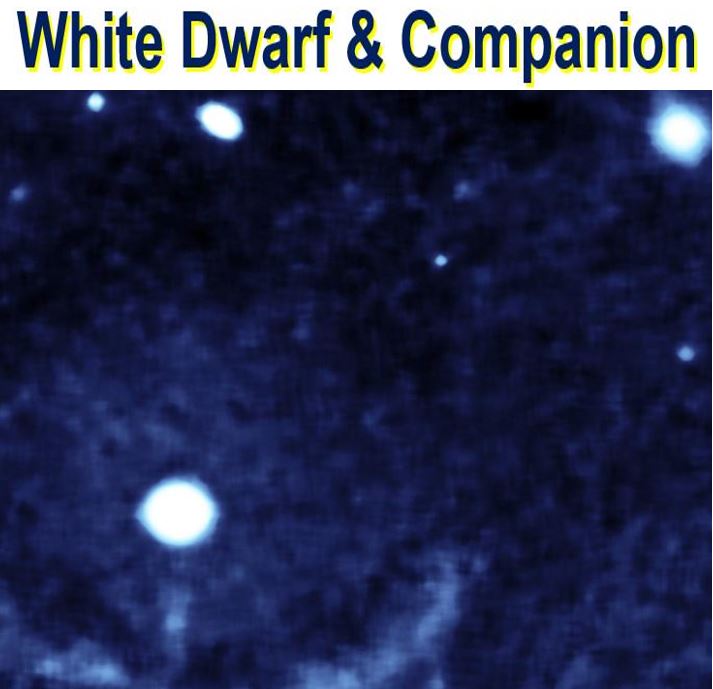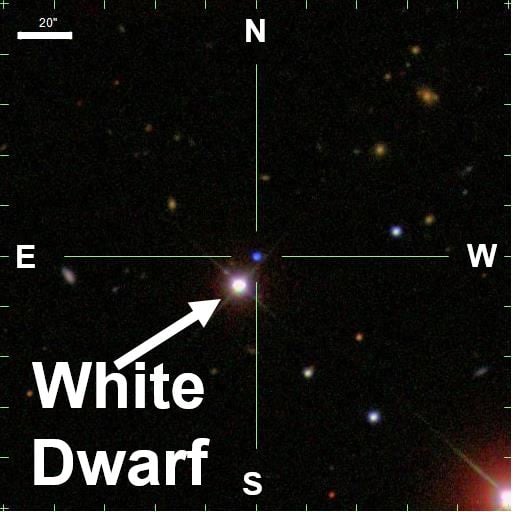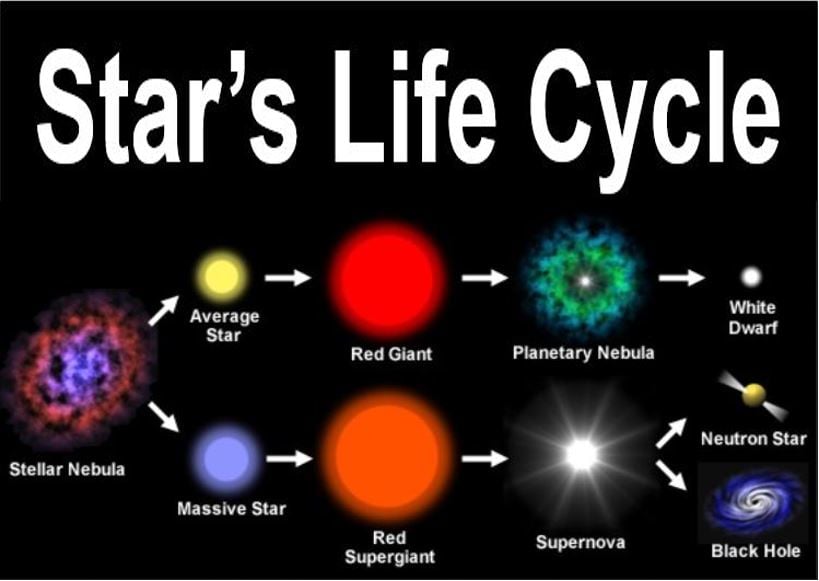A White Dwarf Star with a coating of pure oxygen has been discovered, sparking excitement among astronomers and astrophysicists worldwide, but no great surprise. Scientists have long theorized that oxygen-pure white dwarf stars could exist, but have never been able to prove it, that is, until now.
A team of researchers from Germany and Brazil, who wrote about their discovery in the journal Science, say that what they found could challenge some of what we believe we know about stellar evolution (evolution of stars).
The discovery could also provide a key link to some kinds of supernovae discovered since the turn of the century.
 According to NASA: “A white dwarf is what stars like the Sun become after they have exhausted their nuclear fuel. Near the end of its nuclear burning stage, this type of star expels most of its outer material, creating a planetary nebula. Only the hot core of the star remains.” (Image: jpl.nasa.gov)
According to NASA: “A white dwarf is what stars like the Sun become after they have exhausted their nuclear fuel. Near the end of its nuclear burning stage, this type of star expels most of its outer material, creating a planetary nebula. Only the hot core of the star remains.” (Image: jpl.nasa.gov)
What is a dwarf star?
Stars generally die over a period of millions of years. When a Sun-like star has burned all of its hydrogen fuel, it expands and becomes a red giant, spanning several millions of kilometres across. If you placed a red giant where our Sun is, it would probably swallow the planets Venus and Mercury (its size would be larger than Venus’ orbit), and possibly Earth as well.
After its outer layers have been puffed off, the star collapses and becomes a very small, ultra-dense white dwarf. Just a teaspoonful of material from a while dwarf may weigh up to 100 tonnes.
Over a period of billions of years, the white dwarf cools down and eventually becomes invisible.
The white dwarf’s extreme gravity causes the lighter elements, such as hydrogen or helium, to float up to the surface, masking the heavier elements deeper down.
 Picture from the Sloan Digital Sky Survey of the blue oxygen atmosphere white dwarf SDSS J124043.01+671034.68. (Image: Wikipedia)
Picture from the Sloan Digital Sky Survey of the blue oxygen atmosphere white dwarf SDSS J124043.01+671034.68. (Image: Wikipedia)
Team spots oxygen rich white dwarf
While analysing data from the Sloan Digital Sky Survey (SDSS), located at the Apache Point Observatory in New Mexico, USA, Detlev Koester, from Kiel University in Germany, and Souza Oliveira Kepler & Gustavo Ourique, both from the Universidade Federal do Rio Grande do Sul in Brazil, identified the white dwarf star – SDSS J124043.01+671034.68 – with all its outer layer of light elements stripped away.
This was no surprise as several theories had predicted that the outer layers of a white dwarf star could be stripped away. However, this discovery provided the first compelling evidence confirming the phenomenon.
The researchers offered two suggestions to explain why the star ended up like this:
– Perhaps interactions with a nearby companion in a binary star caused this white dwarf to reveal its oxygen envelope.
– Maybe a massive pulse of burning carbon from the centre of the star, pushing outwards, got rid of all the lighter elements.
 A star can die via the red giant-to-white dwarf or supernova-to-black hole route. Our Sun (average star) is likely to become a white dwarf one day.
A star can die via the red giant-to-white dwarf or supernova-to-black hole route. Our Sun (average star) is likely to become a white dwarf one day.
The authors made the following comment in an Abstract in the journal:
“The fact that no hydrogen or helium are observed is surprising. Oxygen, neon, and magnesium are the products of carbon burning, which occurs in stars at the high-mass end of pre–white dwarf formation.”
“This star, a possible oxygen-neon white dwarf, will provide a rare observational test of the evolutionary paths toward white dwarfs.”
Perspective in the journal Science
Boris Gänsicke, who works at the Department of Physics at the University of Warwick in England, wrote in a Perspective that the vast majority of stars in the Universe are currently in the process of burning hydrogen into helium through nuclear fusion in their cores.
 White Dwarfs, like this one – Sirius B captured by the Hubble telescope – have an atmosphere consisting mainly of hydrogen and helium, light gases that float to the top and block the star from view. (Image: le.ac.uk)
White Dwarfs, like this one – Sirius B captured by the Hubble telescope – have an atmosphere consisting mainly of hydrogen and helium, light gases that float to the top and block the star from view. (Image: le.ac.uk)
This process powers their brightness (luminosity) and provides the thermal pressure required to prevent them from imploding (collapsing) under their own weight.
Stars start to die when the nuclear fuel runs out. At this point, two things can happen:
– the star explodes into a supernova,
– it sheds most of its mass and leaves behind a white dwarf.
In most cases, the star becomes a white dwarf.
Gänsicke made the following comment regarding the article by Kepler, Koester and Ourique:
“Kepler et al announce the identification of a white dwarf called SDSSJ1240+6710 that has an almost pure oxygen atmosphere, diluted only by traces of neon, magnesium, and silicon.”
“This white dwarf challenges the textbook wisdom of single stellar evolution and may provide a link to some of the types of supernovae discovered over the past decade.”
First Citation: “A white dwarf with an oxygen atmosphere,” Detlev Koester, S. O. Kepler and Gustavo Ourique. Science. 1st April 2016. DOI: 10.1126/science.aad6705.
Second Citation: “An odd one out,” Boris Gänsicke. Science. 1st April 2016. DOI: 10.1126/science.aaf3768.
Video – How our Sun will die
In five or so billion years in the future, the Sun will swell dramatically until dying to its white dwarf stage.
